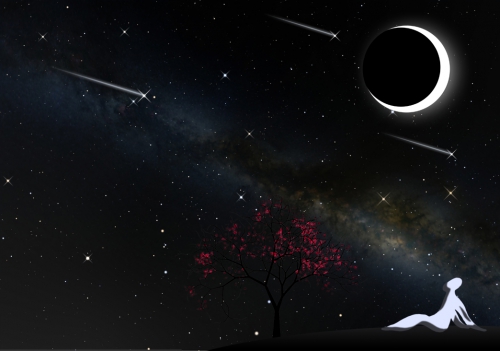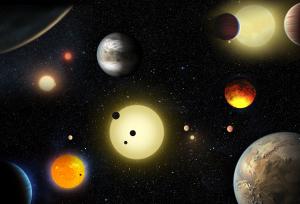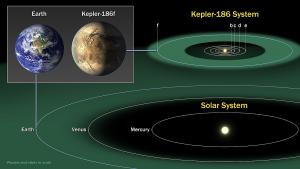
Summer Stargazing Nights
- Where:
- Frosty Drew Observatory
- When:
- Fri, Aug 23, 2019 7:30 pm - 11:30 pm
- Cost:
- $5 Suggested Donation per person 5 years and older
Tonight is Stargazing Night at Frosty Drew Observatory, and forecasts are calling for mostly cloudy conditions this afternoon with skies becoming clear before 11:00 pm. How fast skies will clear is somewhat variable, and we will battle with some level of clouds tonight. Depending on how fast the clouds clear out will largely set our plans for the night. Considering that the third quarter Moon will not rise until about 11:23 pm, we could score a fabulous view of the Milky Way once skies become mostly clear. Additionally, Jupiter and Saturn are quite bright and will be visible in between passing clouds as well as through thinner cloud cover. So the night will certainly get better as we progress.
We will open the Observatory, Sky Theatre, and Science Center at 7:30 pm tonight. We would have usually started at 6:00 pm with our hydrogen alpha telescope set up on the Sun, though it will be cloudy at that time, so we are skipping our solar viewing program this week. In the Observatory we will start on standby as we closely monitor sky conditions on site. Once the planets become visible, we will open our telescopes to the cosmos. On tonight’s list are Jupiter, showing all four Galilean Moons and eventually the Great Red Spot; Saturn with fabulous views of the rings; and a handful of binary stars, nebulae, and star clusters. All of this depends on sky conditions and visibility. In the Sky Theatre we will show our regular feature of celestial objects photographed at Frosty Drew Observatory. In the Science Center we have the work of Frosty Drew Observatory’s Scott MacNeill on gallery. We will stay open until 11:30 pm.
Overall, tonight’s skies will start off rather poor, and will eventually become clear. Though clearings will likely happen later in our session, so tonight is likely a night to skip, especially if making the long drive. If you are in the general area, then it may be worth it to swing by later in the night. Regardless, tomorrow night (Saturday, August 24, 2019) we are hosting our final Celebrate the Milky Way event of the summer, and weather at this time is looking rather promising. This gives you a second chance to catch a view of the stunning starscape over Frosty Drew Observatory. So either take a risk and swing by tonight, or wait it out and stop in tomorrow night for a night out under the stars.
----------------------------------
Weekly Happenings
Scott MacNeill
Tomorrow night, Saturday, August 24, 2019, starting at 8:30 pm, the Frosty Drew Observatory will host its third and final Celebrate the Milky Way event for the 2019 summer season. These are the nights that we think will bring the best view of the Milky Way to the skies over Frosty Drew on a Saturday. Frosty Drew Observatory is situated in Ninigret Park along the border of the Ninigret National Wildlife Refuge, which gives us some of the darkest skies in Southern New England, and a fabulous spot to catch sight of the Milky Way galaxy stretching overhead. Late August is technically outside of our official Milky Way viewing season at Frosty Drew Observatory, though the galaxy will still be quite visible in the night sky, just not at its best, as it is during mid-spring – mid-summer. At this time, weather forecasts are looking somewhat variable, though quite promising. If the forecast sticks or improves, then tomorrow night may be the night to check off the Milky Way on your bucket list of things to see in your life, with a fabulous night out under thousands of stars. We’ll send another update out tomorrow with our expectations for the event.
Over the past several years, exoplanet hunting has become all the rage, and rightfully so! Are we alone in the Universe? That is a powerful question, possibly one of the most game changing questions of our existence. It is the question that drives so much of our research and exploration. The implications of that question illicit both excitement and fear, for numerous reasons. Over the past decade, numerous missions have been launched on the premise of that question, with the goal of finding planets similar to Earth that exist outside of the Solar System.
An exoplanet is defined as a planet that resides outside of the Solar System. A planet that does not orbit the Sun. To date these mission have discovered 4,103 confirmed exoplanets, spanning 3,056 star systems, and we are just getting started! This result has seriously intensified our search for extraterrestrial life, creating a significant focus on exoplanets that reside in the habitable zone around a star. The habitable zone is defined as the orbital distance from a star where temperatures allow for liquid water to exist on the surface of a planet, a key requirement for life as we know it. Any exoplanet we find in this region we catalog as an “Earth-like planet”. But what about the size of these exoplanets?
Many of the Earth-like planets we discover are quite large, and are considered super-Earths, though how many Earth-sized planets exist in the habitable zone around stars in the galaxy? Additionally, most of the exoplanets we have discovered exist around red dwarf stars, but how about Sun-like stars? How many Earth-sized planets that reside in the habitable zone around a Sun-like star are out there? This is the question that a team of researchers at Penn State University recently set out to answer. Using data from the NASA Kepler mission as well as improved star properties data from the European Space Agency (ESA) Gaia mission, the team was able to estimate that one-in-four Sun-like stars in the Milky Way galaxy have a planet 0.75 – 1.5 times Earth’s diameter with an orbital period of 237 – 500 days that resides in the habitable zone. Let’s think about that. The Milky Way galaxy has about 200 billion stars, of which 10% are Sun-like, resulting in about 20 billion Sun-like stars. If every four of these stars have an Earth analog (Earth twin), that gives us around 5 billion Earth-sized planets in the Milky Way galaxy that orbit a Sun-like star in the habitable zone! This statistic will help future exoplanet hunting mission to optimally develop to an expectation of exoplanet discovery. As more of these seemingly Earth-analog exoplanets are discovered, the need to analyze their atmospheres will become a pressing priority. Once that capability exists, we will be able to search for signatures of extra terrestrial life on these distant worlds. The rate at which we are moving in this area could place the discovery of extra terrestrial life in our lifetime, and finally offer an answer to that big question.
Catch up on some of the leading exoplanet missions and databases:
NASA Transiting Exoplanet Survey Satellite (TESS)
NASA Kepler Mission
NASA Exoplanet Archive
Check out our page on Visiting Frosty Drew Observatory to learn more about what to expect at the Observatory and better help you prepare for your visit.
Please note that we do not allow any white lights on our campus from dusk - dawn. This is to ensure an equally awesome view of the night sky for all as well as to allow for the use of light sensitive astronomical equipment. Learn more about why we have this requirement in The Red Light District
To allow for visitors to freely explore all of the amazing experiences at Frosty Drew Observatory without having to wait in long lines, we have integrated a pass-based group access process that applies to only the large telescope inside the observatory dome. Take a moment to familiarize yourself with this process as part of your planning steps.



